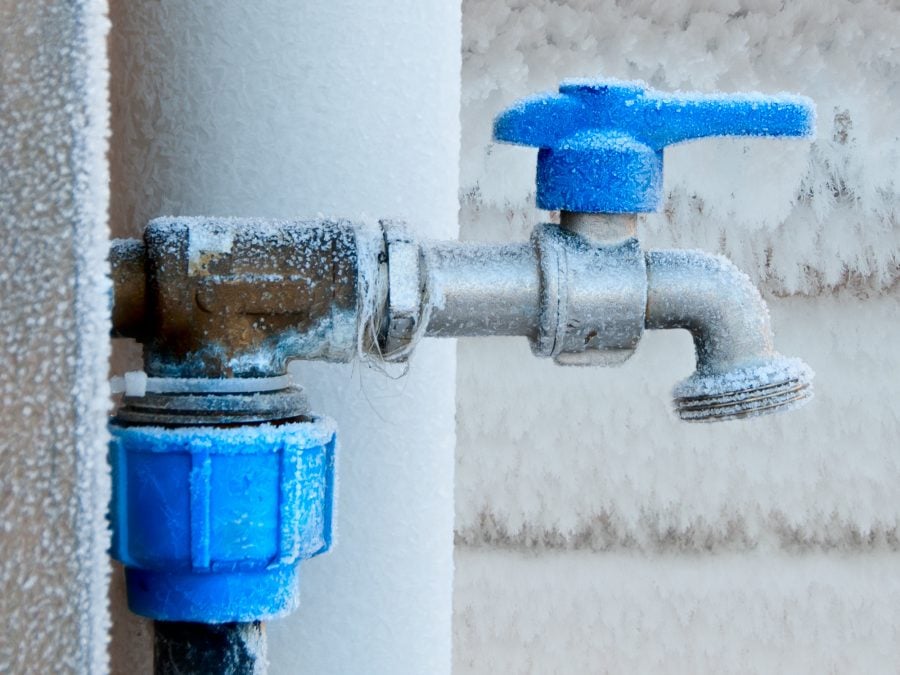Safeguarding Pipes from Cold Weather Issues: Critical Approaches
Safeguarding Pipes from Cold Weather Issues: Critical Approaches
Blog Article
Just how do you really feel on the subject of Prevent Frozen Pipes ?

Cold weather can ruin your pipes, specifically by freezing pipelines. Here's just how to stop it from taking place and what to do if it does.
Introduction
As temperatures drop, the threat of frozen pipes increases, potentially resulting in pricey repair work and water damages. Understanding exactly how to stop frozen pipelines is vital for home owners in cool climates.
Avoidance Tips
Shielding susceptible pipelines
Cover pipes in insulation sleeves or utilize warmth tape to protect them from freezing temperature levels. Focus on pipes in unheated or external locations of the home.
Heating strategies
Keep indoor spaces appropriately warmed, specifically locations with pipes. Open cabinet doors to allow cozy air to flow around pipes under sinks.
How to determine icy pipes
Try to find lowered water flow from taps, uncommon odors or sounds from pipes, and visible frost on subjected pipelines.
Long-Term Solutions
Architectural adjustments
Consider rerouting pipelines far from outside wall surfaces or unheated locations. Add additional insulation to attic rooms, basements, and crawl spaces.
Updating insulation
Invest in high-quality insulation for pipelines, attic rooms, and walls. Proper insulation aids maintain consistent temperatures and minimizes the threat of icy pipelines.
Safeguarding Outside Pipes
Yard tubes and outdoor faucets
Disconnect and drain yard pipes prior to winter months. Mount frost-proof faucets or cover exterior faucets with insulated caps.
Understanding Icy Pipes
What causes pipelines to freeze?
Pipelines freeze when exposed to temperature levels below 32 ° F (0 ° C) for expanded periods. As water inside the pipelines freezes, it increases, putting pressure on the pipeline walls and possibly causing them to rupture.
Threats and damages
Frozen pipelines can result in supply of water interruptions, residential or commercial property damages, and pricey fixings. Ruptured pipelines can flooding homes and create comprehensive structural damages.
Indicators of Frozen Piping
Recognizing frozen pipes early can prevent them from bursting.
What to Do If Your Pipes Freeze
Immediate actions to take
If you think icy pipelines, maintain faucets open up to eliminate stress as the ice melts. Make use of a hairdryer or towels soaked in hot water to thaw pipes slowly.
Final thought
Avoiding frozen pipelines calls for proactive steps and fast feedbacks. By understanding the reasons, indicators, and preventive measures, home owners can secure their pipes throughout winter.
5 Ways to Prevent Frozen Pipes
Drain Outdoor Faucets and Disconnect Hoses
First, close the shut-off valve that controls the flow of water in the pipe to your outdoor faucet. Then, head outside to disconnect and drain your hose and open the outdoor faucet to allow the water to completely drain out of the line. Turn off the faucet when done. Finally, head back to the shut-off valve and drain the remaining water inside the pipe into a bucket or container. Additionally, if you have a home irrigation system, you should consider hiring an expert to clear the system of water each year.
Insulate Pipes
One of the best and most cost-effective methods for preventing frozen water pipes is to wrap your pipes with insulation. This is especially important for areas in your home that aren’t exposed to heat, such as an attic. We suggest using foam sleeves, which can typically be found at your local hardware store.
Keep Heat Running at 65
Your pipes are located inside your walls, and the temperature there is much colder than the rest of the house. To prevent your pipes from freezing, The Insurance Information Institute suggests that you keep your home heated to at least 65 degrees, even when traveling. You may want to invest in smart devices that can keep an eye on the temperature in your home while you’re away.
Leave Water Dripping
Moving water — even a small trickle — can prevent ice from forming inside your pipes. When freezing temps are imminent, start a drip of water from all faucets that serve exposed pipes. Leaving a few faucets running will also help relieve pressure inside the pipes and help prevent a rupture if the water inside freezes.
Open Cupboard Doors
Warm your kitchen and bathroom pipes by opening cupboards and vanities. You should also leave your interior doors ajar to help warm air circulate evenly throughout your home.

Do you really like more info about 6 Ways to Prevent Frozen Pipes? Post feedback down below. We will be happy to find out your responses about this article. We are looking forward that you visit us again in the future. For those who liked our blog post plz make sure you remember to share it. I cherish your readership.
Need Help? Hire Us Now! Report this page